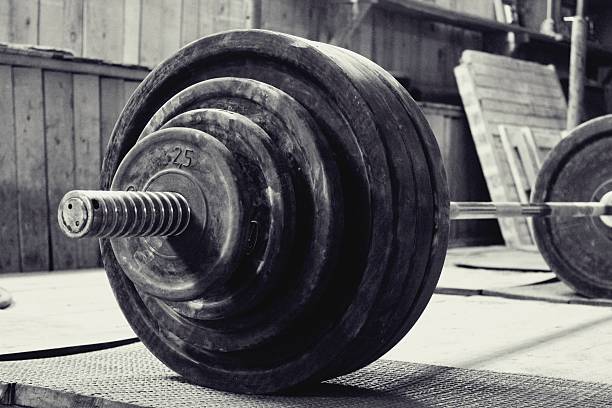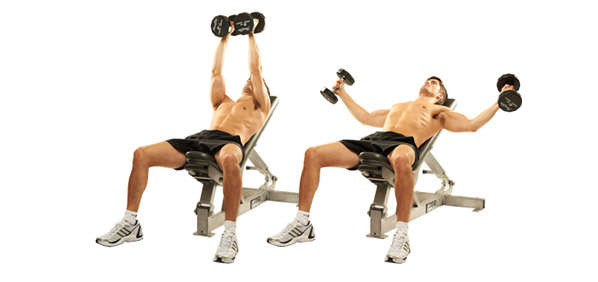The Dumbbell front raise is an isolation exercise for the anterior deltoid and it’s awesome to achieve pumps & vascularity on your delts. The anterior deltiod is the front head of the shoulder muscle also referred to as your front delts. The other two heads are the rear deltoid and the side delts. By isolating and strengthening the front delt you should be able to improve your performance on other lifts such as the overhead press and bench press.
Here’s how to do dumbbell front raises:
- Grab a Pair of Dumbbells. Since we are isolating a relatively small muscle, be warned that you will not be able to lift as heavy as your use to. Start off light and focus on perfecting your form and really blasing that anterior deltoid. Aim for sets of 8-12 reps at first.
- Dumbbells By Side Or Out Infront. There are a few variations to choose from when performing your dumbbell front raises. You can either start the movement with dumbbells by your side or infront of you, with dumbbells resting on your thighs. The choice is yours. Try both and use which ever method feels more comfortable for you.
- Grip. Depending where you place the dumbbells to start with will depend upon your grip. If dumbbells are out infront of you, you will use an overhand grip with palms facing you. If dumbbells are by your side your grip will be the same as above but dumbbells will be placed sideways with your palms facing in towards the side of your body. To feel stronger throughout the lift squeeze the dumbbells hard before you attempt that first rep.
- Lift. Lift the dumbbells up infront of you until they reach around shoulder level. You can lift them slightly higher than shoulder height should you wish to do so. Maintain a slight bend in the elbow as you lift the dumbbells up. Focus on really using your front delt muscles to elevate the weight up. Do not lift them with straight arms. This is uncomfortable and will put strain on your joints.
- If you are starting the lift with your arms by your sides then you can either lift the dumbbell straight up infront of you with your palms facing sidewards or you can rotate them slightly once you come closer to reaching shoulder height. If you rotate your hand as you lift the dumbbells you should end up with palms facing down towards the floor once you reach the top part of the movement.
- Lowering. Depending which variation of the front raise you are using, lower the weight in a controlled manor while keeping tension on the front delts. If you do this correctly you will really feel the front delt working. Prepare to feel a slight burn. Dont let this put you off! If you started the lift with dumbbells infront of you, you can lower the dumbbells in exactly the same fashion as you lifted them.
- If you started with dumbbells by your sides you should lower them by maintaining the position your palms are facing (sidewards and in towards the body) or rotate them back to how they were originally positioned. For example, if you lift the dumbbells by assuming a grip where palms are facing sidewards and in towards the body and then rotate the dumbbell when you lift it, you should rotate it back on the lowering phase as well before pushing for that next rep so palms are once again facing sidewards and in towards the body.
Dumbbell Front Raises When Using Them For Achieving The Best Pumps – Things To Think About
Supplements. You should always take the best supplements for a pump and vascularity if that’s your ultimate goal. You should also check our other post about the best supplements for a pump and dumbbell flys as they’re also a great exercise & we suggest you check the link we’ve found regarding the best supplement options.
Weight Used. Start off light if you do not have previous experience with this exercise. Weight used will need to be relatively light as i mentioned before as we are isolating only one specific head of the shoulder muscle.
- Elbows Slightly Bent. It’s important to maintain slightly bent elbows when lifting the weight up. If you dont you will eventually experience joint pain and may end up injuring yourself. You also wont be able to move as much weight if you lift with straight arms. It takes stress away from the targetted muscle and will feel extremely uncomfortable.
- Body Movement. Ideally to stress the front deltoid as much as possible you should eliminate all body movement. This includes swaying and using momentum to get the weight up. However, feel free to use a very slight sway or movement when lifting or lowering the weight. It’s important however that this is kept to a minimum and is not over exagerated.
- Too much movement will take work away from the muscle as you will be using momentum more than muscle to get the weight up. If you cannot control the weight on the way down or at least slow it down a little, then this is a good indicator that the set is as good as over.
- Variation. Front raises can also be performed using a barbell if you wish to switch things around a little in your training routine. An EZ Bar will probably feel more comfortable than a traditional barbell when performing the barbell version of the front raise but both are still effective. With a barbell you can use both an overhand and underhand grip. Lifting guidelines are the same as above.

